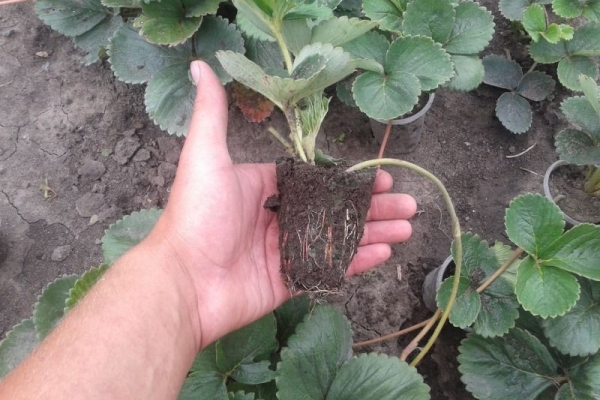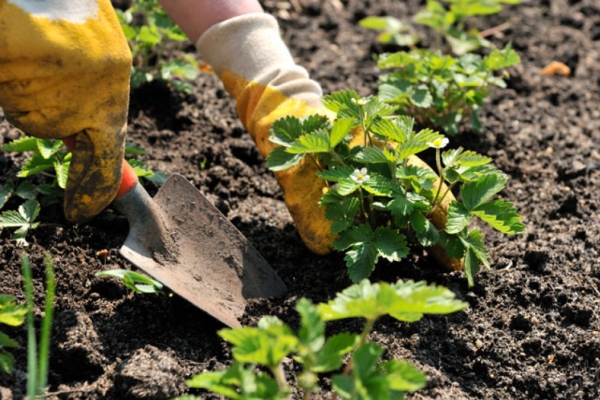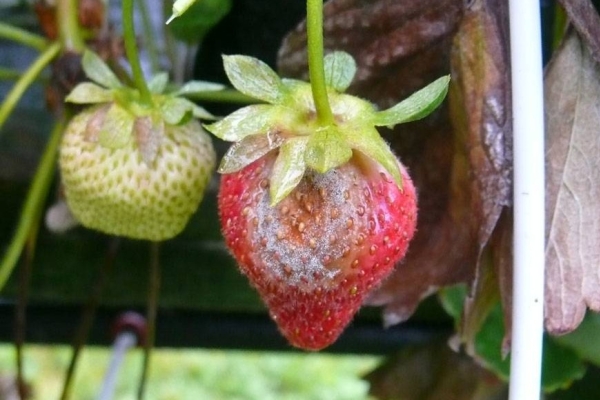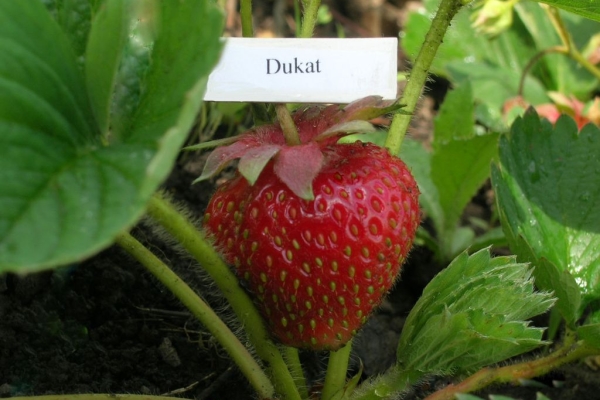We all love summer days to eat the berries of ripe, juicy strawberries, harvested from their own garden. So how to choose a variety of berries in order to get as much harvest as possible if this berry is rarely resistant to severe climate changes in different regions? Luckily, There are very inexpensive and resistant varieties of strawberries, such as Dukat..
Table of contents
Dukat variety description
Dukat - fruitful strawberry variety bred by Polish breeders, resistant to frost and unpretentious in the care.
According to the description, refers to the early or early-middle varieties. The ripening period is in June-mid July.
Usually the fruit is quite abundant.: from one bush with proper and frequent watering can collect up to 2 kg of berries.
Ripe berry is a large round fruit. On average, the weight of one berry is about 40-50 grams.
The flesh is quite dense, juicy, bright red color without bright white center. On the surface of the berry there is an elastic glossy film. The stem is easily separated from the berry itself.
Bushes of this grade grow very plentifully. They also give a lot of antennae, which allows you to quickly multiply your crop.
Large grade sheets, have a light green color, but at the same time the bushes themselves are quite low with a thick stalk.
Flowers of both sexes with a large number of stamens, located just below the leaves.
Strawberries adapt well to different types of soil and quietly endures wintering, but as a precautionary measure you should prepare a shelter for the beds in the winter.
When growing strawberries, the temperature in the ground should not be below -8 degrees.

Where to plant
Recommended for this variety of strawberries continental climateHowever, it can be easily realized on the lands of the North Caucasus.
Sometimes, for a better harvest, strawberries can “languish” in the cold earth for several months, as this berry loves moist soil.
It is undesirable to plant strawberries in open areas, often blown by the wind.
Small life hack: in case the soil is still too wet, you can add a small amount of sand to the roots when planting. This will help prevent the spread of rot.
Planting strawberries
Disembarkation is made both in spring and autumn. Experienced gardeners recommend planting this variety in winter., because so the strawberry eventually gets a richer flavor.
In the autumn
The landing begins in late August - early September.. Mandatory conditions for planting in the fall - is the presence of fertilizer.
Either compost or humus is used as a fertilizer. Approximate consumption - 1 kg per square meter.
Before planting the soil must be prepared: since strawberries do not grow at great depths, it is recommended to dig the ground 25-30 cm deep, not more.
If you plan to land in the autumn, the preparation should begin in 2-3 weeks before the landing.

In the spring
Usually begins planting strawberries in the period from late April to mid-May. The beds are cleared of weeds, the soil is pre-moistened a little and loosen.
If the ground itself is wet, then it is necessary to make grooves around the fertile zone to drain moisture.
Ways
Strawberries are usually planted in rows.. Rows are prepared at a distance of about 70 cm from each other for better further separation of the antennae and cleansing the weeds. At the same time between the beds themselves observed 15-20 cm distance.
In the ground they make holes and carefully place a seedling in it. Then they are buried to a small height, so that the apical bud is at the level of the soil, and the roots are not exposed.
It is very important not to bury the seedlings deeply and not to leave them on the surface.. In the first case, the roots are saturated with moisture and will not germinate, in the second - they simply wither.
Upon completion of planting, the soil should be poured abundantly and put a mulch of straw or sawdust to choose from.

Watering and further care
Dukat - picky variety, and therefore it is necessary to water it infrequently.: once a week is enough in the autumn, and in the summer period to moisten the soil every three days.
When the fruit is fruitful, it is preferable to use only sprinkling After each watering the soil is loosened.
Fertilizers and fertilizers
Also in the spring, strawberries will require additional feeding, especially if the soil is not rich in trace elements. There are options:
- Fertilizing ammonium sulfur. For example, for 10 squares, 135 grams of this “powder” is used.
- Full mineral fertilizer for fruitful bushes. It depends on whether you can further propagate this variety.
- Comprehensive feedings They are good because they contain trace elements, on which the size of the fruit in the future depends.
- Phosphorus-potash mineral fertilizers are also required for strawberries.
- Alternatively, as a top dressing can be used and humus, but you can often go too far with him.
- Nitrogen compounds are also good. for soil - they are made in spring.
Depending on the age, strawberries are applied at different times.: for young plants it is a period of growth of organs, and for fruit-bearing shrubs during an abundant formation of berries.

Diseases and how to deal with them
There are several common diseases for the strawberry variety Dukat:
Black rot
Signs of: watery berries, dull taste, darkening and decay.
Way to fight: try to eliminate the infected beds, as it is hardly possible to get rid of this, and there are chances to save the remaining shoots.

Nematode
Signs of: darkening and deformation of leaves, the formation of red spots on them.
Treatment: treat bushes with warm water, not higher than 45 degrees. It is possible to repeat the procedure several times.
Mealy dew
Signs of: white spots and bloom on the fruits and leaves of the plant.
Remedy: prepare a solution of soda ash at the rate of 50 grams of substance per 10 l of water and process the beds.
For other types of pests, this variety is immune.
It is unpretentious, is a good neighbor for other plants in the garden and perfect as the first experience of growing berries in the garden.
